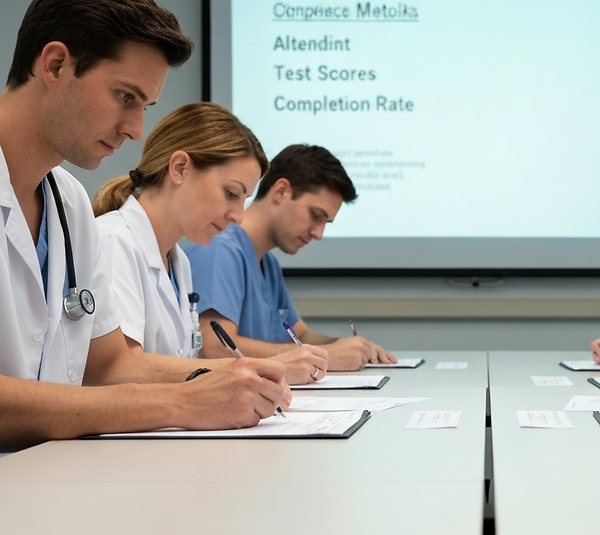
Standardizing Hospital Training Through Realistic Simulation
Training Healthcare Teams in Realistic Simulations
Hospitals operate in fast-paced, high-stakes environments where teamwork and safety depend on preparedness. Traditional staff training—seminars, slides, and limited live drills—often fails to recreate the pressure and complexity of real emergencies. Mimic Health XR provides hospitals and training institutions with hospital staff VR training and emergency response simulation environments that allow teams to rehearse critical scenarios repeatedly in lifelike, risk-free conditions.
Challenges in Hospital Staff Training
These limitations make it difficult for hospitals to maintain consistent preparedness and adherence to safety standards across shifts and departments.
.png)
Limited realism in existing drills
Classroom instruction and videos can’t replicate real-time pressure or team coordination demands.
.png)
High logistical costs
Scheduling physical drills interrupts hospital operations and strains resources.
.png)
Low retention
Passive training formats lead to weak long-term recall.
.png)
Limited evaluation metrics
Traditional assessments rarely measure teamwork and decision-making under stress.
How Health XR Solves Training Challenges?
.png)
Immersive Emergency Response Simulations
Health XR enables staff to experience emergency response simulations that mirror real hospital environments—such as trauma triage, code blue procedures, or mass-casualty events. Teams practice communication, prioritization, and response under realistic conditions.
Infection Control and PPE Protocol Training
Through infection control simulation training, staff rehearse donning and doffing PPE, sterilization processes, and isolation-room procedures. Every action can be repeated and tracked until mastered, ensuring compliance with institutional standards.
Equipment Familiarization and Safety Checks
Health XR’s medical equipment VR training introduces new devices, monitors, or tools in interactive modules. Staff can explore equipment operation virtually before using it on the floor, reducing real-world learning curves and potential errors.
Measurable Performance Evaluation
Supervisors can assess readiness through data dashboards—tracking decision time, task accuracy, and adherence to protocol. These metrics turn training into actionable insight for administrators.
Benefits for Hospitals and Training Centers
Reinforces standardized procedures across departments.
Improves team coordination and real-time communication.
Reduces operational downtime caused by live drills.
Enhances knowledge retention through experiential learning.
Allows on-demand refresher sessions for new or rotating staff.
Builds a culture of safety and preparedness measurable at scale.
.png)

.png)